Bench Press Shoulder Pain: 6 Reasons Explained
Shoulder pain is among one of the most common complaints from exercisers performing the bench press on a regular basis, as this particular compound exercise places significant stress on the various tissues that reinforce and move the shoulder.
Fortunately, most cases of shoulder pain caused by the bench press are easy to remedy and will usually have an obvious cause; making bench press shoulder pain a temporary setback at its worst for most exercisers.
Generally, bench press shoulder pain is caused by strain of the rotator cuff, of which is a set of muscles that aid in the movement and reinforcement of the shoulder as a whole - though quite a few other injuries presenting shoulder pain as a symptom are also possible.
What is Shoulder Pain from the Bench Press?
Shoulder pain may occur during the bench press during any point of its performance, as well as in several different parts of the shoulder, all of which point to different injuries or severities of said injury, depending on these particular factors.
Shoulder pain is a symptom of an injury - however major or minor - that must be remedied in order to continue performing the bench press, with any subsequent performance of said bench press having whatever issue that lead to the injury fixed.
Anatomy of the Shoulder
The term shoulder collectively refers to the three heads of the deltoids muscle group, the rotator cuff muscles, the acromioclavicular joint, the labrum that stabilizes the ball and socket joint of the shoulder and the shoulder blades that are pinned beneath the torso during a proper bench press.
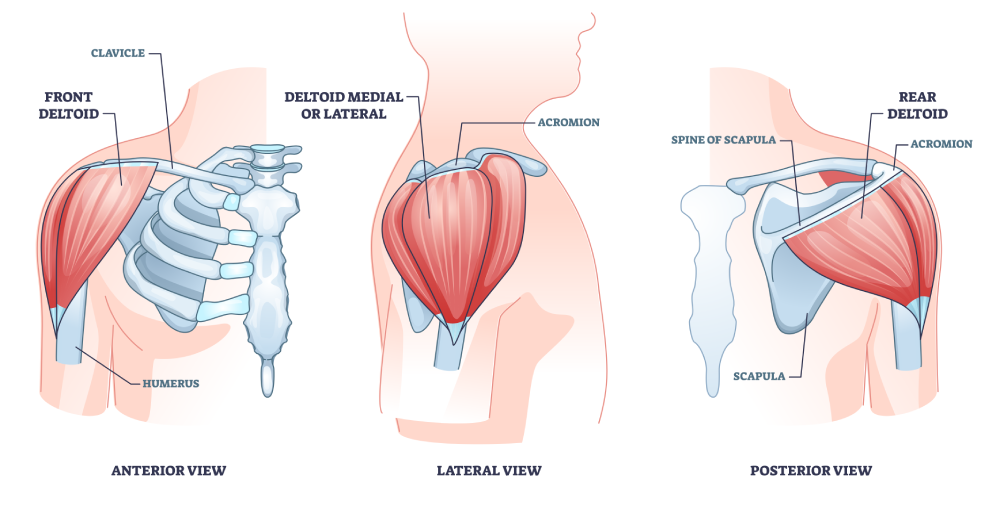
Depending on where in the shoulder the pain radiates from, and during what portion of the bench press (or even if it occurs after the bench press itself), one may determine with reasonable accuracy the sort of rehabilitation such an injury requires, and what issue in the bench press may have caused it.
Shoulder Kinetics During the Bench Press
During the bench press, the shoulder enters a state of flexion as the anterior deltoid is recruited as a primary mover during the exercise, alongside various unidirectional kinetic movements directly relating to the shoulder’s influence on the humerus bone that makes up the upper arm.
In certain cases, injuries to the scapula or shoulder blades may cause pain to radiate from the shoulders, as these structures connected to the shoulders are also rotated or extended by accident during the bench press.
At any point during the bench press, the various structures of the shoulder are placed under stress, with the skeletal musculature contracting in a dynamic and static capacity, the connective tissues being in a state of flexion and the ball and socket joint of the shoulder being placed in a disadvantageous position due to the angle of resistance.
While many form cues are practiced during the bench press that ensure none of these factors result in injury, incorrect form adherence or excessive strain may otherwise still cause these structures are damaged.
This is especially true during the flexion of the shoulder, wherein the exerciser presses the bar over their torso. Flaring of the elbows, a failure to properly retract the scapula or asymmetric shoulder contraction will all result in posterior deltoid and rotator cuff injuries relating to this kinetic movement.
Does the Bench Press Injure the Shoulder?
The bench press is known for injuring the shoulder as it places direct pressure and force onto the joint while it is placed in an unstable and disadvantageous position, resulting in an increased risk of tears, strains, pulls, and various other soft tissue injuries.
These, for the most part, may be avoided with proper form adherence and preparatory work - though some discomfort and pain is relatively common, especially in novice or intermediate weightlifters that have not entirely mastered correct bench press form cues.
1. Improper Grip Width
Perhaps one of the most subtle yet most common causes of shoulder pain during the bench press is that of improper grip width; with both too narrow and too wide hand placements along the barbell placing the shoulders in a dangerous position that may result in pain and injury if too much resistance is loaded therein.
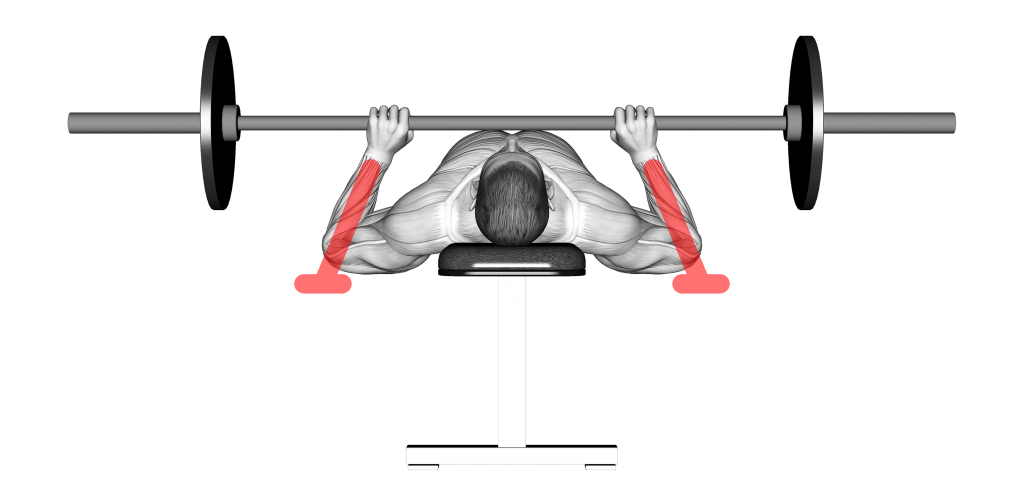
The hands should be placed approximately one and a half to double the width of the shoulders apart, though this is a highly individual matter as all exercisers possess different bodily proportions and levels of mobility.
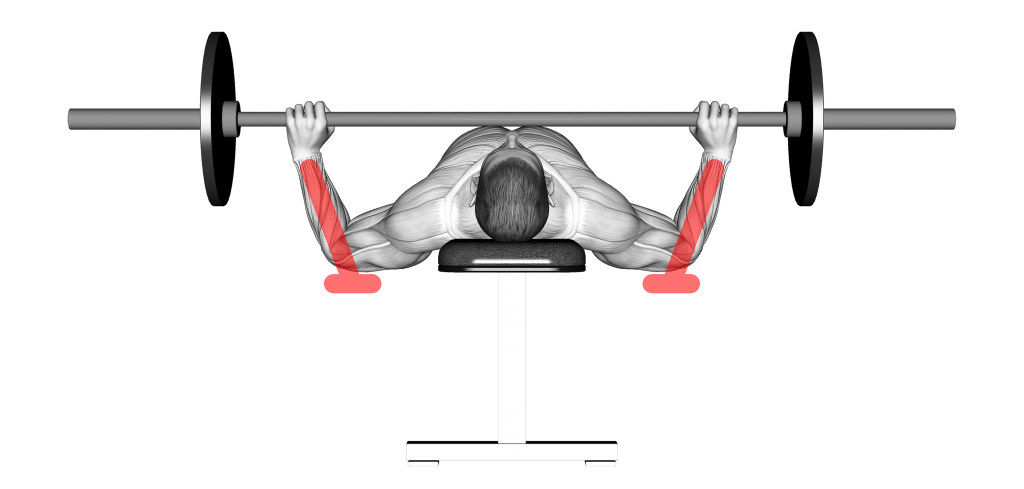
As such, it is advisable that the exerciser experiment and find what grip width is most suitable for them.
2. Improper Shoulder Rotation
Internal or external rotation of the shoulder during the bench press is a significant error in form adherence, and will usually result in posterior deltoid head or rotator cuff injury if done during particularly heavy sets of the exercise.
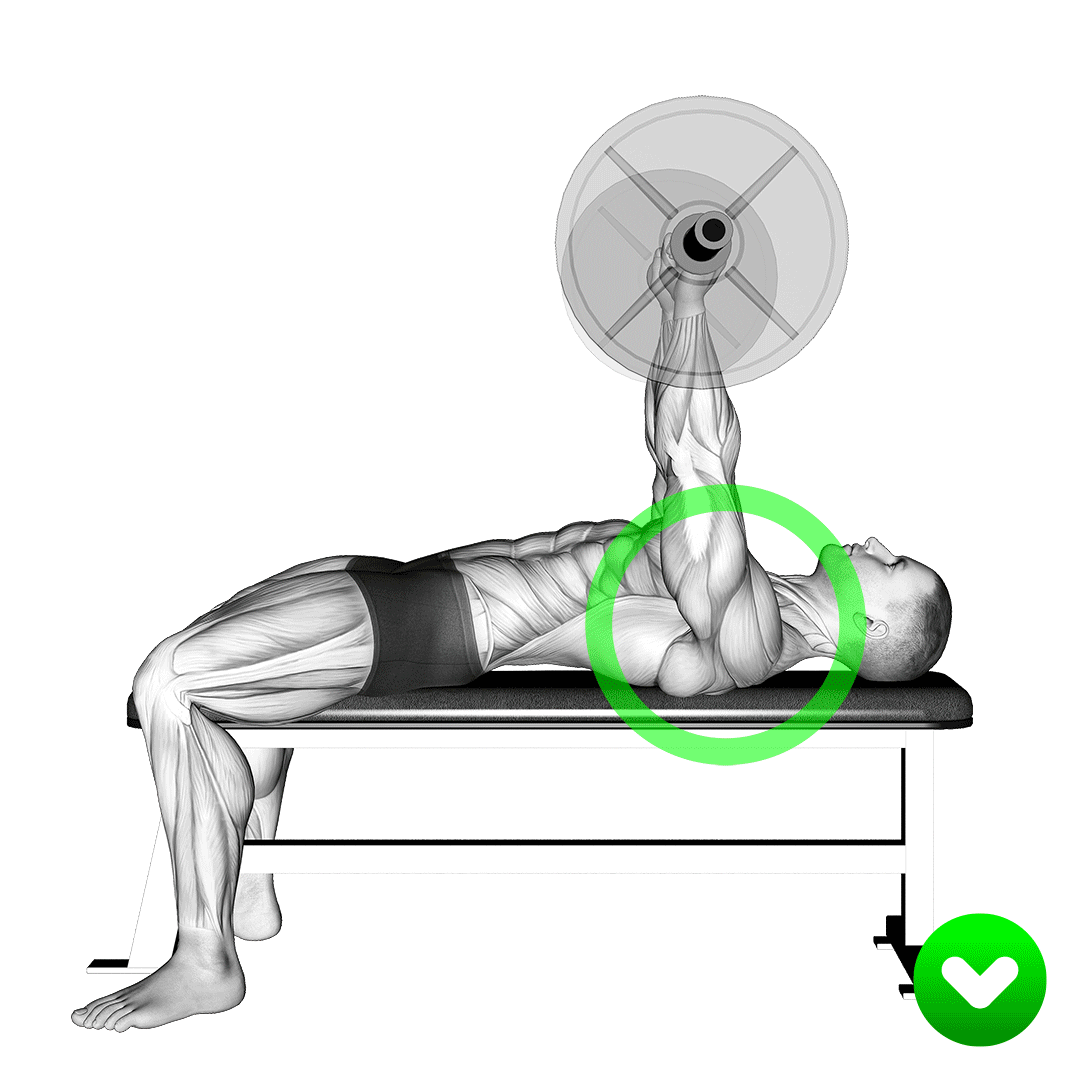
During the bench press, the shoulders must be rolled downwards, with the shoulder blades retracted and pinned beneath the exerciser so as to prevent the shoulders from rotating improperly. If this still does not remedy improper rotation of the shoulder, the exerciser must also alter their hand placement as was mentioned in the previous section.
3. Elbow Flaring
Another major cause of shoulder pain during the bench press is “flaring” or adduction of the elbows away from the sides of the torso.
In a proper bench press repetition, the exerciser’s elbows should be close as comfortably possible to the sides of the exerciser, with grip width, bar touch point, and arm length dictating exactly how flared the elbows may safely be on a case by case basis.
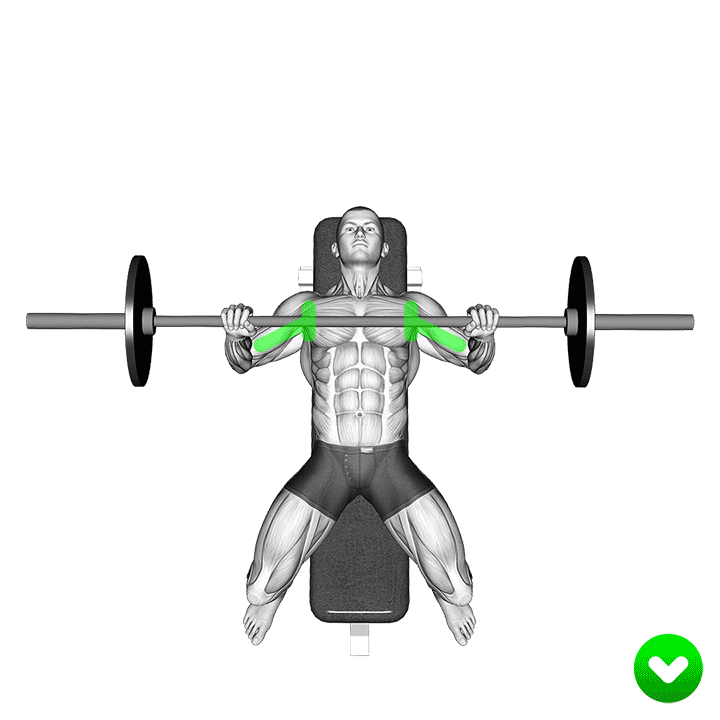
If the exerciser is experiencing shoulder pain in the posterior deltoid head or rotator cuff, they may try altering the extent to which their elbows are flared so as to reach a more advantageous position for their shoulders.
Other factors can play into accidental over-flaring of the elbows, such as an excessively narrow grip width, or lowering the bar too low along the torso - both of which will force the elbows to move away from the torso in order to prevent dislocation or other injuries.
4. Improper Bar Touch-point
Touched upon in the previous section, the point along the torso wherein the barbell makes contact as the exerciser lowers it during the eccentric portion of the bench press can also cause significant shoulder pain as it places torsion throughout the ball and socket joint of the shoulder - in most cases, specifically the labrum.
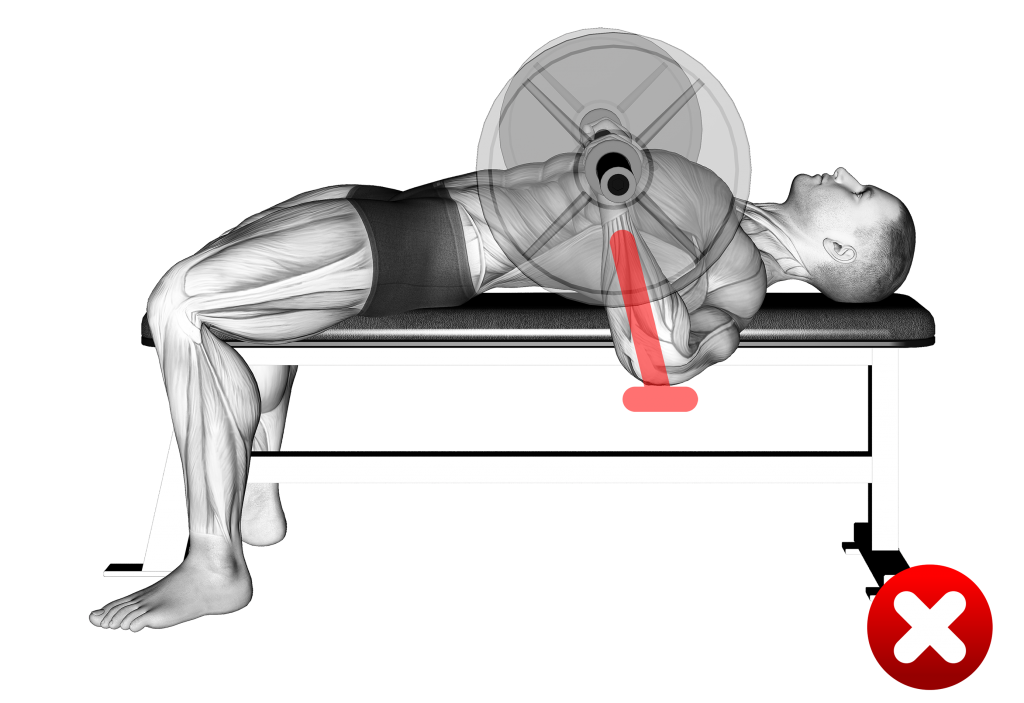
The exact touch point of the bar will depend on the exerciser’s comfortable hand placement and the extent to which their elbows are tucked throughout the movement, though it is generally agreed upon to be between the bottom of the pectoral muscles and the lower portion of the sternum.
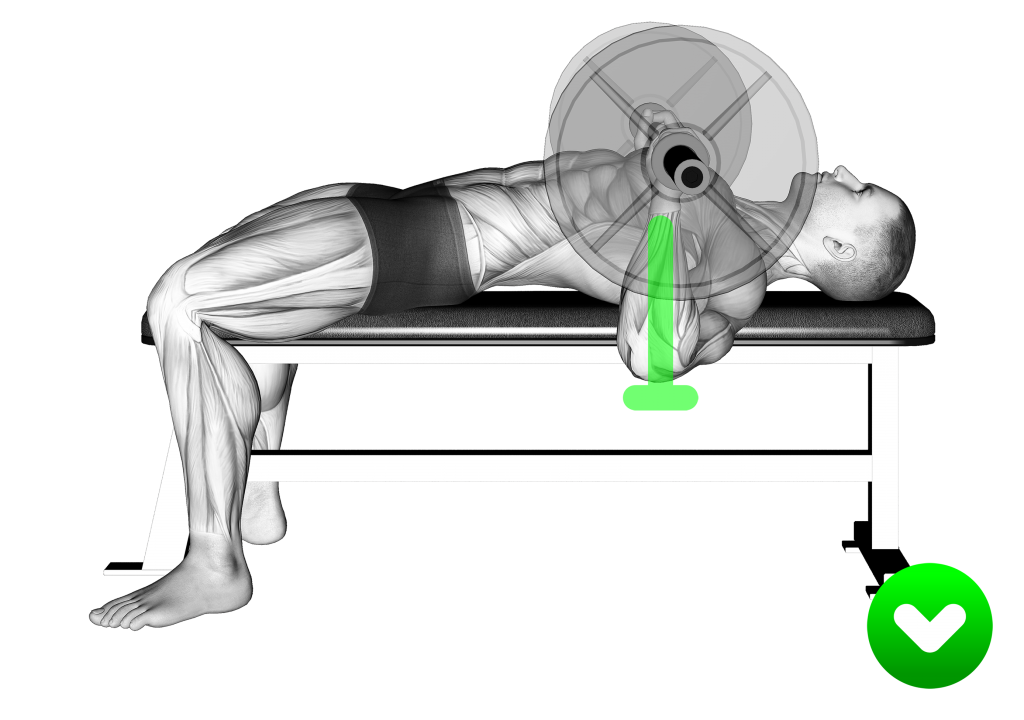
An incorrect touch point is usually just a symptom of other bench press mechanics being improperly performed, and if the exerciser finds that they cannot comfortably lower the bar to their chest without triggering their shoulder pain, it is advisable for them to examine other aspects of their bench press as well.
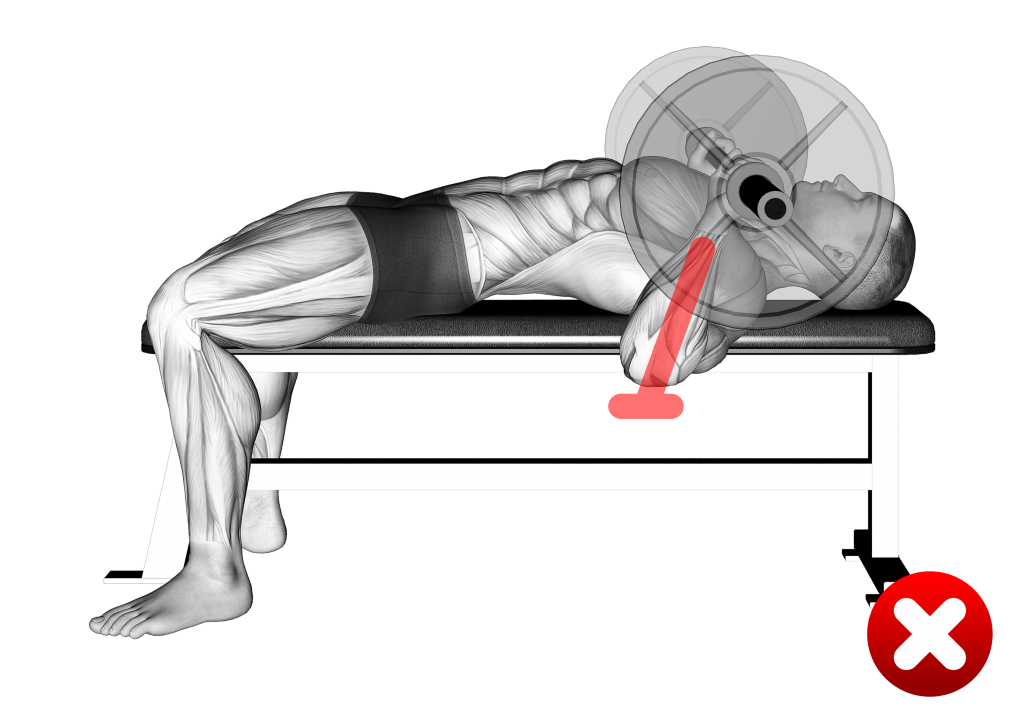
5. Jerky Momentum Repetitions
Less associated with a specific part of the shoulder that is experiencing pain and more of the entire structure being forced to withstand the stresses of jerky bench press repetitions, this particular error in bench press technique places significant force on the shoulders during what should otherwise be a stable and slow repetition.
This absorption of force as the exerciser halts the barbell at either end of the repetition will, over time, cause wear and tear related injuries in the tendons and musculature of the shoulder.
In order to avoid this, each repetition of the bench press must be performed in a slow and controlled manner, with the exerciser avoiding bouncing the barbell off their chest or otherwise lowering it too rapidly by collapsing their elbows - of which will lead to injuries not only related to shoulder pain.
6. Tissue Overuse Injuries
Another factor associated with the bench press that may lead to shoulder pain is that of overuse injuries.
These sorts of injuries are not directly related to any sort of failure in form adherence or improperly executed bench press mechanics, and are more to do with performing said bench press too often without proper rest and rehabilitation between training sessions.
In order to avoid overtraining and overuse injuries, it is important for the exerciser to ensure that they are intaking sufficient macronutrients, getting enough sleep, and allowing their muscles enough rest between workouts to recover fully.
Shoulder pain is only one symptom of muscle overuse, and is usually accompanied by weakness and muscular fatigue - characteristics that are not usually present in other injuries related to the bench press.
How to Prevent Bench Press Shoulder Pain
The surest way to prevent bench press shoulder pain from occurring in the first place is to always utilize proper form, avoid excessive force and pressure being placed on the rotator cuff or its surrounding tissues, as well as to ensure adequate preparatory work and recovery is followed between training sessions.
If form is correctly adhered to, the exerciser is conservative with their progressive overload, and they otherwise follow every other aspect of proper resistance training procedure; it is likely that the exerciser may go their entire training career without serious shoulder injury, especially relating to the bench press, of which is considered to be quite a safe exercise when performed correctly.
When one is in doubt as to whether they are doing everything they can to reduce the risk of injury during the bench press, they may consult a certified athletic coach who will examine their training program, diet and exercise form in order to correct any mistakes being made.
Alternatives to the Bench Press with Reduced Shoulder Stress
If the exerciser has tried all the aforementioned precautions and examined every factor of the bench press for mistakes yet still finds that their shoulder pain is present - one recourse is to instead utilize an exercise similar in effectiveness and muscle group activation that otherwise does not stress the shoulders to the same degree.
Reduced Range of Motion Lifts Such as Floor Press, Pin Press and Block Press
For exercisers finding that their shoulder pain is at its worst during certain portions of the bench press’s range of motion, they may utilize certain variations of the bench press that shorten the total bar path made during the exercise.
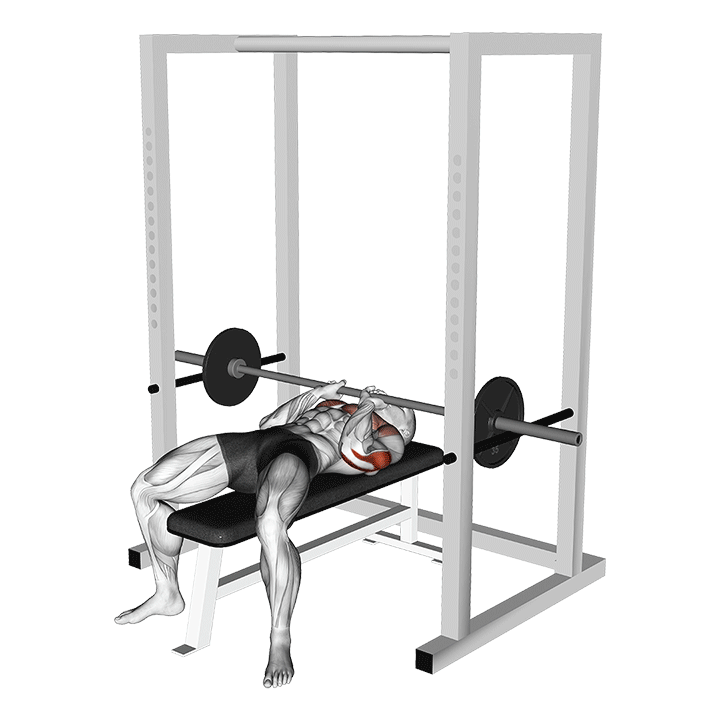
Such alternatives like the floor press that essentially halves the range of motion, the block press that prevents barbell-chest touchpoint contact or the pin press that provides an adjustable range of motion are all perfectly suitable for these situations - though one must keep in mind that their muscle group activation will be different to that of a conventional bench press.
Enforced Bar Path Lift Such as Chest Press Machine or Smith Machine Press
In the case of the exerciser being unable to maintain a correct bar path due to bodily proportions, an inability to adhere to correct form or other factors; utilizing an alternative exercise that enforces a strict bar path such as a smith machine bench press or the chest press machine should remedy this issue.
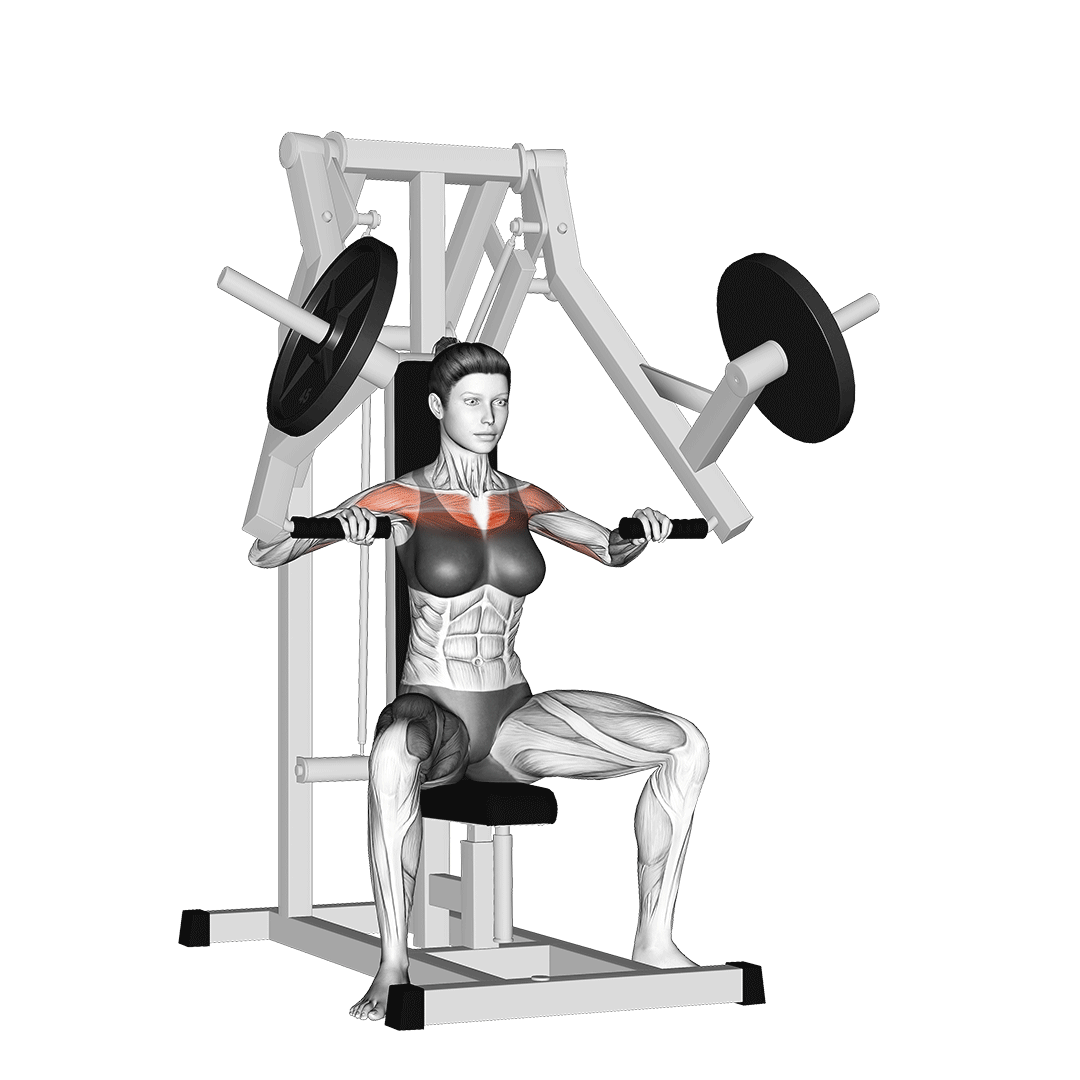
Of course, all the benefits and detriments associated with switching out a free weight exercise such as the barbell bench press with a machine counterpart are still applicable, and as such will require additional accessory movements be made.
Neutral Grip Dips
If the shoulder pain the exerciser is experiencing has more to do with the pronated grip enforced by the bench press, they may find that the usage of an exercise similar in training stimulus but instead places the hands in a neutral position to be a suitable alternative.
Unfortunately, not many exercises rival the bench press while presenting these particular characteristics, and as such it is solely the neutral grip chest dip that is capable of acting in such a manner.
References
1. Bhatia DN, de Beer JF, van Rooyen KS, Lam F, du Toit DF. The "bench-presser's shoulder": an overuse insertional tendinopathy of the pectoralis minor muscle. Br J Sports Med. 2007 Aug;41(8):e11. doi: 10.1136/bjsm.2006.032383. Epub 2006 Nov 30. PMID: 17138640; PMCID: PMC2465431.
2. Barnett, Chris1; Kippers, Vaughan2; Turner, Peter1 Effects of Variations of the Bench Press Exercise on the EMG Activity of Five Shoulder Muscles, Journal of Strength and Conditioning Research: November 1995 - Volume 9 - Issue 4 - p 222-227
3. Wattanaprakornkul D, Halaki M, Cathers I, Ginn KA. Direction-specific recruitment of rotator cuff muscles during bench press and row. J Electromyogr Kinesiol. 2011 Dec;21(6):1041-9. doi: 10.1016/j.jelekin.2011.09.002. Epub 2011 Oct 5. PMID: 21978788.
4. MADSEN, NELS; McLAUGHLIN, THOMAS Kinematic factors influencing performance and injury risk in the bench press exercise, Medicine & Science in Sports & Exercise: August 1984 - Volume 16 - Issue 4 - p 376-381
